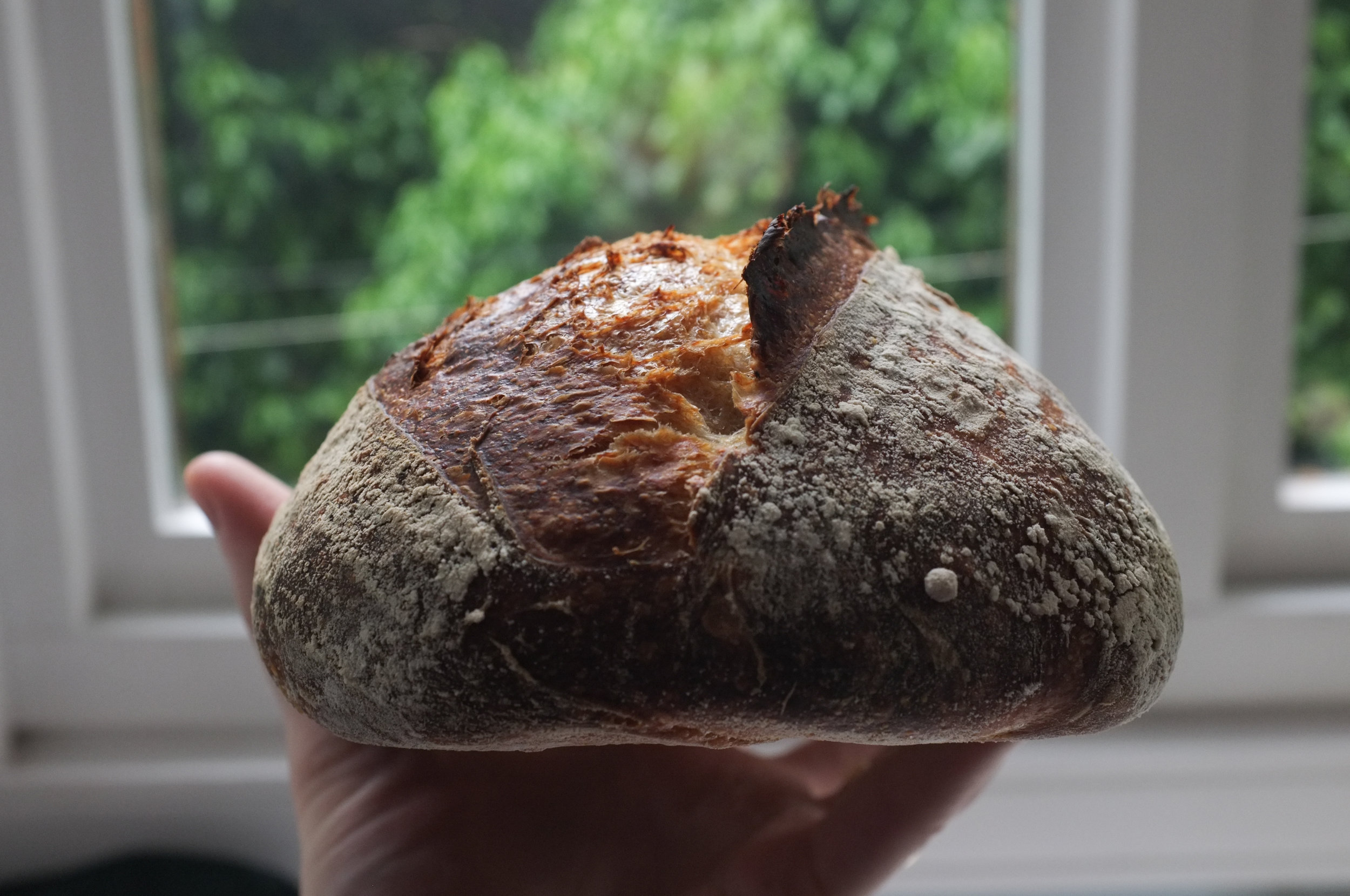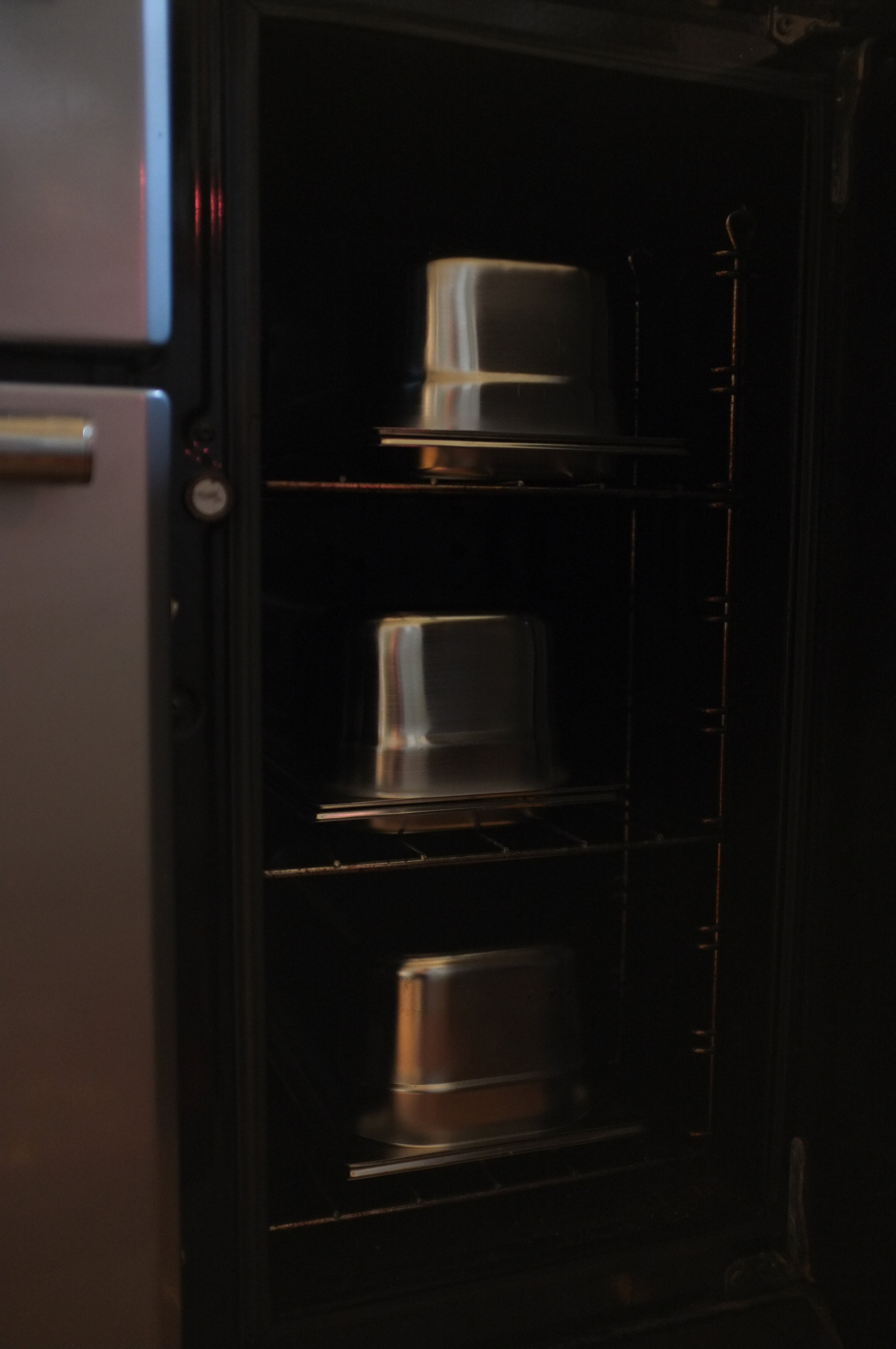The Bread Tin Revolution
I’m smug: there has almost never been a situation over the last 12 months where I do not have homemade sourdough in the house. It might be a shock for some to learn that #GBBO alumni don’t bake every day: I’m here to disappoint. By baking bread once or twice a week, I’ve got plenty for a household of disproportionate bread gluten consumption, plus plenty leftovers for people I like.
The secret is baking in batches. The extra time it takes to bake three or four loaves instead of one is minimal. At the minute, I bake three small-ish loaves at a time: 900g flour, 600-650g water, 300g wet sourdough starter, 20g salt. An easy recipe, infinitely modifiable.
If you’ve discovered the sheer and endless joy sourdough already, you’ll also likely have discovered that the average home oven (especially fan ovens) are equivalent of sticking a hairdryer into a box made of tin foil: they dry out the crust prematurely, and any steam you attempt to add is blown away. As such, bakers have come up with many tricks to emulate the steamy, stagnated environment of the professional bakers’ oven.
Many honorable, independent companies might sell you a branded cast iron or stoneware container, the sole purpose of which is to bake bread in. I think this is a rather inefficient and expensive use of kitchen space. Instead, I’ve often recommended the cast iron pot, or dutch oven, which many of us already own. They work brilliantly, preheated or with your bread plonked straight onto the cold metal. Lid on 20 minutes, lid off 30 minutes.
They are expensive, though. They are heavy. They still take up loads of space and are cumbersome to move about. They are most usefully round, which isn’t good for making batards (oblong breads). And if your pot is enamelled, then you’ll have to suffer the slow darkening or discolouration of the glaze over years of abuse in a fiery oven.
These factors cumulate into a relationship with cast iron that is not conducive to using them regularly. I’ve discovered an alternative, though. This alternative work just as well, if not better than cast iron. They stack together to take up minimal space. They’re a breeze to clean, as well as to get your bread in and out from. You can bake from cold, and score your loaves in the tin. They require less oven space, and because they’re lightweight, less energy to heat up. And best of all, they’re cheap, and widely available.
I’m talking about the GN pan, or the gastronorm pan. These are the stainless steel trays you often see in commercial catering. In fact, they’re everywhere in commercial catering. They’ll fit the steam oven in your local michelin starred restaurant, and they’ll be what the dinner lady is scooping sponge pudding from at the local school.
GN pans are made in standard sizes and can be made of stainless steel or plastic. Don’t buy plastic ones. I use “1/3'“ stainless GN pans, which means they are exactly 1/3 of the size of those big trays used by dinner ladies and perfect for a loaf made from 600g of dough (up to 900g as a maximum). In my rangemaster, I can fit 7 at once. Yes, I can bake SEVEN LOAVES AT THE SAME TIME. Not that I need to, but it’s nice to know I can. 4 loaves in the main oven (two top shelf, two bottom shelf) and 3 loaves in the side oven stacked one above the next.
For this to work, you need two GN pans per loaf, costing £10-12 for both. The first should be shallow, and I use a 20mm 1/3 sized stainless GN Pan. Dusted lightly in semolina, I turn my loaves from the proving basket straight onto it. There’s no need for a peel, and no need for baking paper. Then, for the lid, I use an upturned 100mm 1/3 GN Pan. This creates a stainless steel box in which your bread experiences the ideal baking environment. The steam from the hot dough is concentrated between it and the steel, and the oven’s heat is most directly fired into the bottom of the loaf, giving a good base, even crumb and good oven spring.
I bake as when using cast iron, though it all happens slightly quicker. Your oven can be used from as soon as it gets up to temperature. Bake in a hot oven (eg 250C/230C fan) for 20 minutes with the upturned lid on, and then remove it. Bake for another 30 minutes if you like it dark, or until it looks good to you. Filling the oven with innumerable loaves seems not to make a difference.
I’ve been hesitant to reveal this, because although my first tests were promising, I wasn’t sure that it would work consistently. And they aren’t perfect - the top doesn’t slot into the bottom, so you’ve got to sandwich them together precariously. The steel is very thin, so is susceptible to cold spots in your oven to a higher extent than thick cast iron, and they can bash and bend.
But deep down, maybe I wanted to keep the option open of capitalising on this - of branding my own product. Maybe I will: race you. But as it stands, GN pans work, and so well: it’s too good a trick not to tell everyone about.
NOTES
I got my GN pans from Nisbets in a sale, who I’ve got no affiliation with but I’ve experienced pretty good service from in the past. You can find the 1/3 GN pans here, including 20mm and 100mm options. You might be able to find them cheaper elsewhere: https://www.nisbets.co.uk/kitchenware-and-knives/gn-pans/stainless-steel-gn-pans/_/a33-3?q=%3Ap_bygnsize%3A12f320gn20third
Super Sourdough: the foolproof guide to making world-class bread at home is out 19th September 2019. Pre-order here: https://www.amazon.co.uk/Super-Sourdough-foolproof-making-world-class/dp/1787134652/





